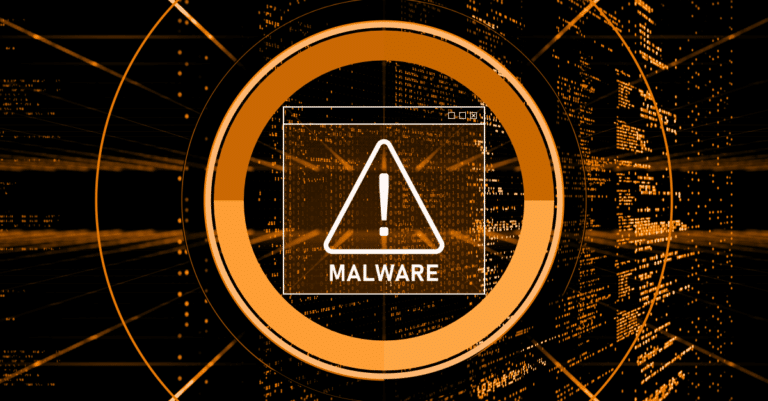Four Critical Steps You Can’t Afford to Miss:
For most small businesses, network security is either misunderstood, underfunded or left to “whatever came in the box.”
But here’s the reality: once your business is connected to the internet, you’re in the middle of a race you didn’t sign up for. Cybercriminals don’t care about your size, they care about your gaps.
At TechKnowledgey, we work with Indiana-based businesses every day who want to get security right without making it overly complex or expensive. The key is starting with the right foundation.
These are the four non-negotiable best practices every small business should have in place to protect their network.
1. Own Your Data and Infrastructure
If your business doesn’t own its subscriptions, accounts or storage, your data isn’t really yours.
We see it all the time. A cloud account tied to an employee’s personal email. A free CRM running the core of the business. A domain name owned by a former vendor. It might work for a while… until it doesn’t.
Here’s what owning your data means in practice:
- Every subscription, license and admin account is in your business’s name
- You know exactly where your critical data lives and who can access it
- You don’t rely on “free forever” tools that vanish when you need them most
Free software may seem convenient, but it often comes with trade-offs that cost more in the long run. If you’re not the customer, you’re the product.
2. Protect the Edge of Your Network
If you bought your firewall at a big box store, you’re still at the starting line while the race is already over.
Your network’s edge – the place where your internal systems meet the public internet – is the most vulnerable point in your environment. A solid firewall is essential, but not just any firewall.
Best practices here include:
- Installing a business-class firewall that fits your network’s size and complexity
- Ensuring it’s properly configured and actively managed, not just plugged in
- Segmenting your network, so if one device gets hit, it doesn’t take everything else down with it
If you’re still using consumer-grade equipment, it’s time to move on. Your network needs more than just Wi-Fi, it needs layered protection that adapts as you grow.
3. Secure Every Endpoint with Managed Oversight
If you’re waiting on an employee to mention a weird error message, it’s already too late.
Every device connected to your network – laptop, tablet, desktop, or phone – is a potential entry point for attackers. Too many small businesses think installing antivirus is enough. It’s not.
Here’s what proper endpoint protection looks like:
- Using managed endpoint protection that includes monitoring, alerting, and real-time updates
- Having a competent manager or partner who knows how to respond to alerts and events
- Keeping all devices patched, updated, and regularly reviewed
Your cybersecurity isn’t just about what you install. It’s about who’s watching and how fast they act when something goes wrong.
4. Lock Down Access to Your IT Identity
Too many businesses deadbolt the front door and leave the basement window wide open.
If someone can log into your systems with old credentials, weak passwords, or no second layer of authentication, it doesn’t matter what else you’ve secured. This is one of the most common – and costly – blind spots in small business security.
Best practices for identity and access management:
- Enforce unique, complex passwords for all accounts
- Require multi-factor authentication (2FA) across critical systems
- Deactivate accounts for past employees immediately
- Use a secure password manager to avoid shared spreadsheets or browser-saved logins
If you’re not sure who still has access to what, now’s the time to find out.
What These Four Practices Actually Do
They give your business control, visibility and a fighting chance.
Network security isn’t about locking everything down like Fort Knox. It’s about creating a clear system that fits your size, risk level and team. These four areas are where real damage happens, and where smart security begins.
Bonus Best Practices (Once the Core is Covered)
Once the essentials are in place, level up your protection with:
- Daily, tested backups. Don’t assume cloud software is doing this for you.
- Employee training. Phishing and social engineering are still the #1 entry point.
- Regular software patching. Especially on less-visible systems.
- VPNs and remote access policies. Especially for hybrid or field teams.
- Security policy reviews. Make sure your rules evolve as your team and tools do.
FAQs About Small Business Network Security
How often should a small business review its security setup?
At least once a year. Or immediately after any staff changes, software upgrades or major workflow shifts.
What’s the difference between antivirus and managed endpoint security?
Antivirus scans for known threats. Managed endpoint security watches for suspicious behavior, responds in real time, and includes human oversight.
Is 2FA really necessary for a small company?
Yes. Most breaches start with a stolen password. 2FA is one of the easiest, cheapest and most effective ways to protect your accounts.
Ready to Get Serious About Small Business Network Security?
You don’t need enterprise tools. You need the right practices, implemented consistently, with the support of a team who actually understands your business.
TechKnowledgey partners with Indiana-based companies that want proactive, plainspoken IT support. Whether you have 10 devices or 200, we’ll help you:
- Take ownership of your infrastructure
- Get visibility into your network
- Protect what matters – without breaking the bank
If you’re not sure where to start, let’s have a real conversation. No jargon. No pressure. Just clarity.






